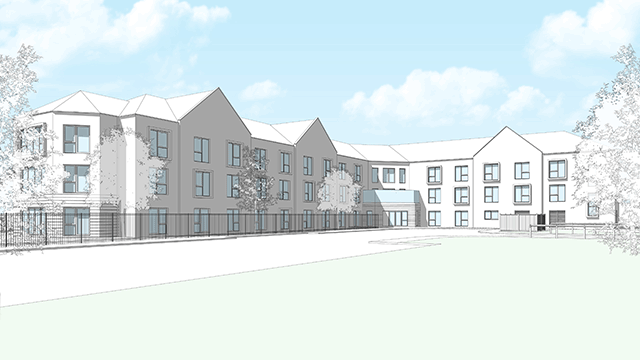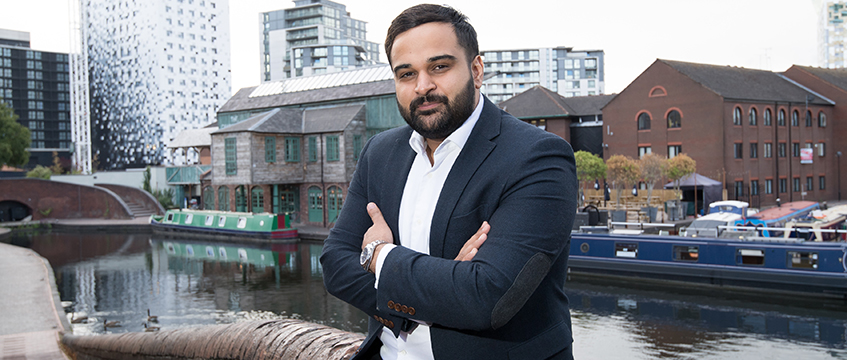Developing property used to be the reserve of a small number of experts. But popular TV shows like Homes Under the Hammer have demonstrated to ordinary people that they can turn a profit by renovating tired, older properties and quickly selling them on.
However, new investors and landlords buying at auction who want to follow this path will need to have their finances in place.
Purchase
As with buying any property, they’ll need to fund a deposit. This could come from savings, or unlocking equity from another property they own – perhaps their own home – with a second-charge loan.
In essence, this piggybacks onto an existing mortgage (the ‘first charge’), but has its own terms and rate. It can be much shorter than a mortgage, if the borrower wishes. Putting down 25% or more will open up options, as the borrower will qualify with more lenders.
For the purchase of the property itself, one borrowing option is a bridging loan. These can be funded within days (rather than weeks, as with a traditional mortgage), so are often used to purchase at auction.
The loans usually last up to 12 months, and there are no monthly repayments to make. Interest is calculated monthly, and bundled up (with any fees) to be repaid in a lump sum with the original loan, as soon as the borrower is able. So, the sooner they repay their loan, the less it costs in total.
Renovation
Borrowers will need to have cash available for the renovation works. A surface renovation of a typically-sized property – updating the floor and wall coverings, and perhaps a new kitchen – can often be achieved for under £5,000. If the renovation is more thorough – perhaps involving rewiring, plastering, and updates to the outside space – the investor may need five figures.
If they’ve spent all their cash on the deposit, they could theoretically cover the renovation cost with unsecured borrowing, such as credit cards. But investors should think hard about whether to take on this risk, and how much this will cost in interest while they’re waiting to sell the property.
Release
Once renovation is complete, the success of any flip project will depend on the buyer’s ability to remove investment as soon as they can.
If they’ve taken out a refurbishment bridging loan with us, they can increase their loan based on the renovated property’s new market value. This releases cash to start another project (or repay additional borrowing, like credit cards if they’ve used them).
And once the property is sold, they’ll need to repay their bridging loan. They could also repay the second-charge loan (if they’ve taken one), or keep this as a ‘float’ to start another renovation project.
Case study: “How I built my portfolio on flipping property”
As a 15-year-old boy, Suki Barham mowed the gardens and painted the fences of his taxi driver dad’s buy-to-let properties.
Now aged 31, he has more than 200 rental homes in London, the North and the Midlands – in a portfolio worth about £10m.
It all started off with a £40,000 flat he’d already agreed to buy – but couldn’t afford.
He says: “I’d been working in a few jobs, including for an estate agent friend of my dad’s and, instead of blowing my wages, I kept all my money, saving bit by bit.
“The estate agent offered me a little flat he said I might like, just down the road from my house, and I agreed straight away. My intention was to refurbish the property and sell it on. The only problem was that I didn’t have all the money I needed.”
Barham was just 23 at the time. The financial crash of 2008 had hit three years before and mainstream banks had dramatically scaled back their lending on property. His dad Vik and mum Narinder were supportive but sceptical that he would be able to raise the finance needed.
Barham, from Birmingham, says: “They thought it would be a ‘no’ from most lenders but then I remembered someone who’d worked with specialist finance company Together. I contacted them and, within a day, they had come back with an offer in principle for the loan I needed and within three weeks I owned the property.”
Barham put down a 30% – or £12,000 – deposit to secure the bridging loan from Together, and made more than £24,000 by selling the flat within three months. “I’d spent my entire life savings,” he says. “But I made just over double what I’d saved up by selling the flat. It gave me the drive to carry on. I thought, ‘I’ll have another punt on this’.”
Over the next three years he would visit auctions to buy, then renovate and ‘flip’ – or re-sell – residential, commercial and semi-commercial properties.
Barham made £84,000 on a single deal by flipping a terraced house in Selly Oak, the heart of Birmingham’s student land. He says: “Every time I sold a property, I was making a few thousand.”
Barham gained his reputation as a trustworthy investor among property professionals in the Midlands. Buoyed by his success, he decided to take his first step into the buy-to-let market and drew on his relationship with Together to buy a house in Birmingham through a specialist mortgage.
He says: “In 2015, I bought four or five buy-to-let properties and rented them out. Then, slowly, I thought that if I buy one a month and keep it, that will build up a nice little nest egg for the future.” Since then, he’s purchased about 100 rental homes, with help from Together.
Following a meeting at the group’s headquarters in Manchester, where he met the company chief executive and specialist underwriters, Together agreed a £5m facility and offered competitive rates and higher loans-to-value (LTVs) for Barham to continue growing his buy-to-let business.
This article appears in EG’s Property Auction Buyers’ Guide, out on 24 November












